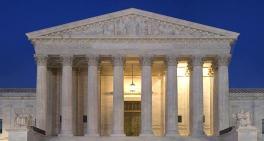U.S. Bankruptcy Courts VI
United States Courts
All bankruptcy cases are handled in federal courts under rules outlined in the U.S. Bankruptcy Code.
There are different types of bankruptcies, which are usually referred to by their chapter in the U.S. Bankruptcy Code.
Individuals may file Chapter 7 or Chapter 13 bankruptcy, depending on the specifics of their situation.
Municipalities—cities, towns, villages, taxing districts, municipal utilities, and school districts may file under Chapter 9 to reorganize.
Businesses may file bankruptcy under Chapter 7 to liquidate or Chapter 11 to reorganize.
Chapter 12 provides debt relief to family farmers and fishermen.
Bankruptcy filings that involve parties from more than one country are filed under Chapter 15.
Puerto Rico - ECF
Rhode Island - ECF
South Carolina - ECF
South Dakota - ECF
Tennessee Eastern - ECF
Tennessee Middle - ECF
Tennessee Western - ECF
Texas Eastern - ECF
Texas Northern - ECF
Texas Southern - ECF
Texas Western - ECF
Utah - ECF
Vermont - ECF
Virgin Islands - ECF
Virginia Eastern - ECF
Virginia Western - ECF
Washington Eastern - ECF
Washington Western - ECF
West Virginia Northern - ECF
West Virginia Southern - ECF
Wisconsin Eastern - ECF
Wisconsin Western - ECF
Wyoming - ECF
Related listings
-
U.S. Courts of Appeals
United States Courts 07/30/2017There are 13 appellate courts that sit below the U.S. Supreme Court, and they are called the U.S. Courts of Appeals. The 94 federal judicial districts are organized into 12 regional circuits, each of which has a court of appeals. The appellate ...
-
U.S. Supreme Court
United States Courts 07/30/2017U.S. Supreme Court The Supreme Court is the final judge in all cases involving laws of Congress, and the highest law of all — the Constitution. The Supreme Court, however, is far from all-powerful. Its power is limited by the other two branches...
-
National Courts
United States Courts 06/30/2017Judicial Panel On Multidistrict Litigati - ECF U.S. Court Of Federal Claims - ECF U.S. Court Of International Trade - ECF

Car Accident Lawyers in New Rochelle, New York
If you have gotten in a car accident, it could seriously change your life. Whether the accident was caused by the other party’s fault or a fault of your own, you’ll want to to make sure that you are ready to prepare yourself for any cases that might follow.
Immediately following any type of car accident, it is important to take certain steps to ensure that the courts will treat you with respect and fairly. First, assess your mental and physical condition. Make sure right after the accident, you document any information regarding the accident and situation, it can be of great help later on.
You’ll want to make sure that you seek professional help for any medical conditions you may be experiencing. Do not wait to seek medical attention, you’ll want to make sure that you have documented evidence of the injury that was caused by the accident. The amount of treatment is also taken into consideration in every case.




